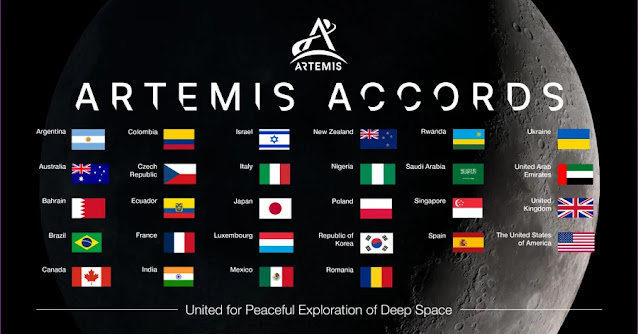Space exploration, often considered the final frontier, has captivated human imagination for decades. As we look to the stars, we realize that the challenges of exploring space are best met through collaboration. One shining example of this approach is the Indian Space Research Organisation (ISRO), which has taken significant strides in space exploration by forging partnerships with international players. In this post, we delve into ISRO's collaborative endeavors and the monumental significance they hold for the future of space exploration.
Artemis Accords: Paving the Way for Lunar Cooperation
Launched in 2020, the Artemis Accords stand as a testament to ISRO's commitment to international cooperation. As a full signatory to these principles, ISRO is part of a global effort to ensure the safe, sustainable, and transparent exploration of the Moon. By teaming up with agencies like NASA, ISRO is contributing its expertise to a framework that emphasizes these principles.
Lunar Orbital Platform-Gateway (LOP-G): A Shared Vision
In 2024, the Lunar Orbital Platform-Gateway (LOP-G) is set to become a reality. This ambitious project, a collaborative effort between ISRO and NASA, promises to be a hub for scientific research and technological innovation. By pooling resources and knowledge, ISRO and NASA are accelerating the development of this lunar outpost. LOP-G will not only serve as a testament to what humanity can achieve through collaboration but also as a springboard for further space exploration endeavors.
Lunar Polar Exploration Mission (LUPEX): A Global Quest for Lunar Secrets
The mystery of the lunar poles has captivated scientists for years, and ISRO's Lunar Polar Exploration Mission (LUPEX) is poised to unveil some of these secrets. By partnering with esteemed international agencies like NASA, JAXA, and ESA, ISRO is maximizing its potential to uncover vital data about water ice and the lunar environment. This mission showcases how collaboration can amplify the impact of individual agencies.
International Lunar Exploration Architecture (ILEA): Shaping a Sustainable Future
ISRO's participation in the International Lunar Exploration Architecture (ILEA) demonstrates its dedication to a long-term human presence on the Moon. By working alongside NASA and other partners, ISRO is playing a crucial role in developing the strategies and technologies necessary for humans to thrive beyond Earth. This collaboration isn't just about reaching the Moon; it's about laying the foundation for humanity's interplanetary journey.
Lunar Exploration for Resource Utilization (LERU): Unveiling Lunar Wealth
The prospect of utilizing lunar resources has the potential to revolutionize space exploration. ISRO's collaboration with NASA and JAXA on the Lunar Exploration for Resource Utilization (LERU) mission is a testament to this vision. By pooling resources, knowledge, and expertise, this partnership is on the cusp of unlocking resources like water ice that could sustain future lunar endeavors.
Looking Beyond: Exploring New Possibilities
ISRO is constantly looking for new opportunities to collaborate with international partners. In addition to the projects mentioned above, ISRO is also involved in a number of other joint missions, including the Chandrayaan-4 mission and the Aditya-L1 mission. By continuing to forge partnerships, ISRO is ensuring that it remains at the forefront of space exploration advancements.
In conclusion, ISRO's collaborative ventures underscore the belief that space exploration is a collective endeavor. The agency's partnerships with international players epitomize the spirit of exploration and innovation that unites us all. As we stand on the brink of a new era in space exploration, one thing is clear: the stars are within reach when we reach out together.




Comments